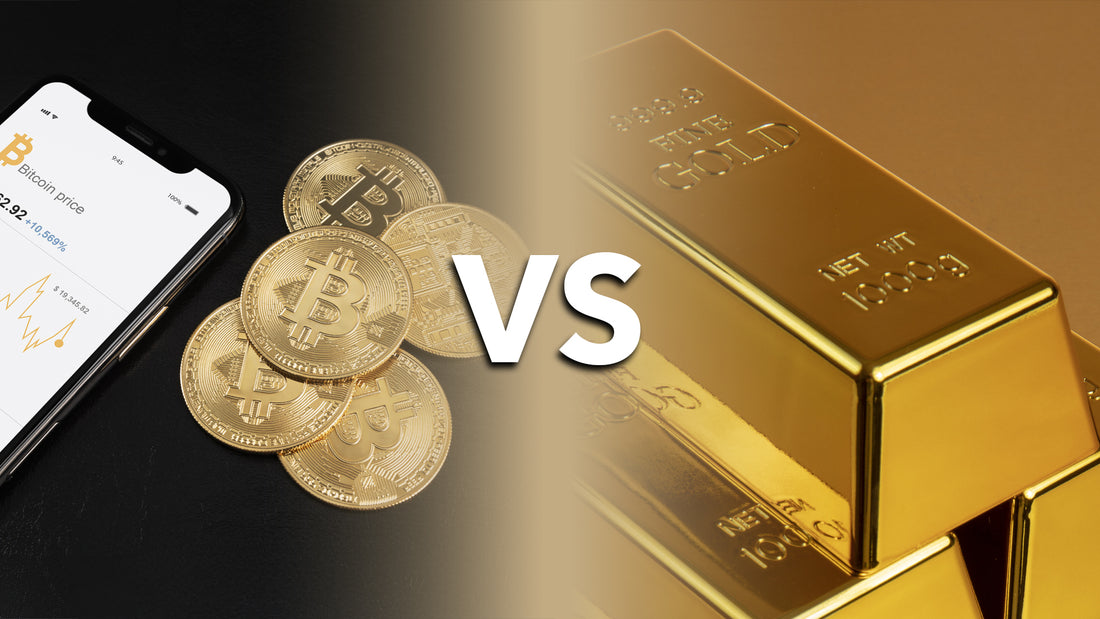
Crypto Gold VS. Real Gold: Understanding the Key Differences
Share
As digital assets continue to evolve, a new form of investment has emerged: crypto gold. However, many investors may be wondering how crypto gold stacks up against real, physical gold. While both forms of gold are tied to the idea of value preservation, they are fundamentally different in their characteristics, risk factors, and uses. Let's break down the key differences between crypto gold and real gold.
- Nature and Tangibility
- Real Gold: Gold has been valued for thousands of years as a tangible asset. It’s physical, which means you can hold it, store it in a vault, and use it as a universal store of value. Real gold is used in jewellery, electronics, and as a reserve by central banks, making it a versatile asset.
- Crypto Gold: Crypto gold refers to digital tokens or cryptocurrencies that claim to be backed by physical gold or represent the value of gold. Unlike real gold, it exists only in digital form. You can't hold or see the actual gold associated with the tokens, and you're trusting that the issuing platform actually holds the gold they claim.
- Ownership and Security
- Real Gold: Ownership of physical gold is direct and straightforward. If you own it, you have complete control over it. You can store it securely, trade it, or pass it down as an heirloom. While there’s always a risk of theft, gold is widely considered a safe-haven asset.
- Crypto Gold: Ownership of crypto gold relies on blockchain technology. Transactions are secured by cryptographic protocols, and ownership is recorded in a decentralized ledger. However, the digital nature of crypto gold makes it vulnerable to hacks, scams, or losing access to your digital wallet. If you lose your private keys or the platform holding your crypto gold shuts down, your investment may be irretrievable.
- Price Stability
- Real Gold: The price of gold tends to be stable over long periods, influenced by factors such as inflation, central bank policies, and global economic conditions. Gold has a track record of retaining its value during financial crises and acts as a hedge against inflation.
- Crypto Gold: While the value of crypto gold may be pegged to the price of physical gold, it’s still subject to the volatility of the broader cryptocurrency market. If the underlying platform experiences instability or if there’s a loss of confidence in the crypto sector, the value of crypto gold may fluctuate far more dramatically than physical gold.
- Regulation and Transparency
- Real Gold: The gold market is well-regulated and transparent, with well-established standards for purity, weight, and pricing. Gold is traded on international markets, and its value is recognized globally.
- Crypto Gold: The regulatory landscape for crypto gold is far less clear. While some crypto platforms claim to hold reserves of real gold backing their tokens, there’s often limited transparency about how much gold is held, where it’s stored, or who regulates it. This lack of oversight raises concerns about trust and accountability.
- Liquidity and Accessibility
- Real Gold: Gold can be sold or traded in global markets, and its liquidity is high. You can sell it in the form of bars, coins, or jewellery relatively easily, and its value is universally recognized.
- Crypto Gold: Crypto gold offers the convenience of digital transactions, making it easy to trade online. However, liquidity depends on the platform and the availability of buyers. Additionally, since crypto gold is digital, it lacks the direct, global recognition of physical gold, especially in cases where the platform’s reputation or stability comes into question.
While both crypto gold and real gold offer exposure to the value of gold, they are fundamentally different investments. Real gold provides the security of a tangible asset with a long history of value preservation. Crypto gold, on the other hand, offers the flexibility of digital ownership but comes with additional risks such as volatility, security issues, and a lack of regulatory transparency.
For investors seeking stability and time-tested security, real gold remains the better choice. However, for those looking to leverage the convenience and technological advantages of the digital world, crypto gold could provide an interesting, albeit riskier, alternative. Understanding the key differences between the two is essential for making informed investment decisions.
